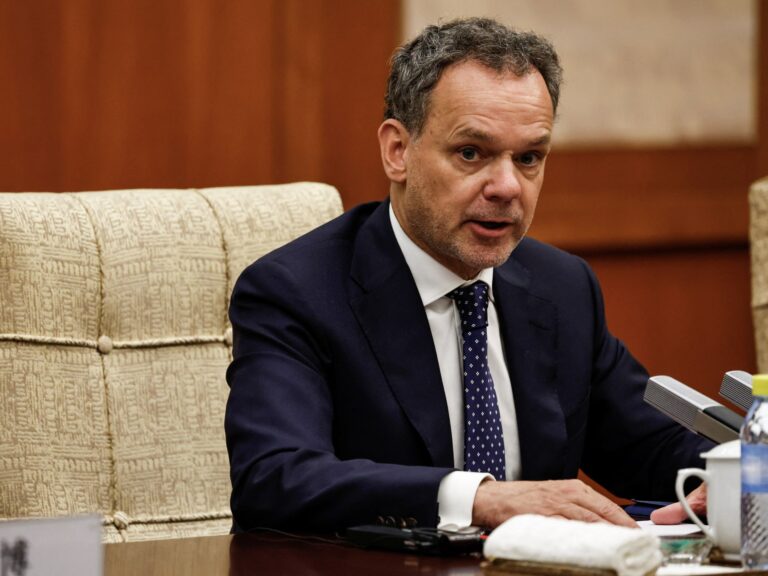This week, Spotify expanded its publishing licensing strategy with a new multi-territory deal with amra, following its recent direct licensing agreement with Kobalt in the US.
Meanwhile, BMI secured its largest rate increase ever for radio royalties, with terrestrial US radio stations now paying nearly 24% more for music licenses.
Elsewhere, the FTC took major action against ticket scalpers under Trump’s administration, filing a lawsuit against a Maryland-based operation that allegedly made $64 million reselling Taylor Swift and Bruce Springsteen tickets.
Also this week, metal band Slipknot neared completion of a $120 million catalog sale to HarbourView Equity Partners, while IFPI CEO Victoria Oakley urged action to accelerate India’s music streaming revenues amid subscription growth challenges.
Here are some of the biggest headlines from the past few days…
1. SPOTIFY EXPANDS MUSIC PUBLISHING LICENSING PUSH WITH NEW AMRA DEAL
Spotify has inked a multi-territory, multi-year renewal deal with amra, the global digital licensing collection society, covering digital mechanical and performing rights across amra’s global footprint including Southeast Asia, India, Australia, Brazil, and Japan.
The agreement follows Spotify’s direct licensing deal with Kobalt last week, which covered only US operations, as part of the streaming giant’s strategy to circumvent its controversial decision to reclassify Premium subscription tiers as “bundles” that pay lower mechanical royalty rates to publishers and songwriters.
Alex Norström, Spotify’s Co-President & Chief Business Officer, said the deal “increases our support of publishers and songwriters with new rights” and “expands the benefits of streaming for writers, artists and rightsholders….” (MBW)
2. CONFIRMED: BMI ROYALTY RATE FROM TERRESTRIAL US RADIO IS RISING BY NEARLY 24%
Performance rights organization BMI has secured its largest rate increase ever for royalties paid on music played on terrestrial US radio. According to court documents, AM/FM radio stations will pay a headline rate of 2.14% of their gross revenue for a blanket license to play BMI-represented songs for 2022 and 2023, rising gradually to 2.20% for 2026-2029. Given that the previous agreement set a blanket fee rate of 1.78% for the 2017-2021 period, this represents a 23.6% increase in the rate radio stations pay for playing BMI music.
The agreement applies to 8,895 commercial radio stations, with around 85% of the money distributed to songwriters and music publishers who own the publishing rights. The NMPA estimates that 8% of US music publishing’s $7.04 billion wholesale revenue in 2024 came from radio… (MBW)
3. TRUMP TARGETS SCALPERS: FTC SUES FIRM OVER TAYLOR SWIFT TICKET RESALES
The US Federal Trade Commission has filed a major lawsuit against Maryland-based Key Investment Group LLC and its network of affiliated companies, alleging they used illegal tactics to circumvent ticket purchase limits and resell hundreds of thousands of tickets at inflated prices, including for Taylor Swift’s Eras Tour and Bruce Springsteen shows. The operation allegedly generated approximately $64 million in secondary market sales revenue, purchasing at least 379,776 tickets from Ticketmaster between November 2022 and December 2023 at a cost of nearly $57 million.
FTC Chairman Andrew N. Ferguson emphasized the action’s connection to Trump administration priorities, stating that “unscrupulous middlemen who harm fans and jack up prices through anticompetitive methods will hear from us.”
The sophisticated scheme allegedly employed thousands of fake accounts, virtual credit cards, IP masking, and “SIM farms” to defeat Ticketmaster’s anti-scalping measures… (MBW)
4. SLIPKNOT NEARS $120M CATALOG SALE TO HARBOURVIEW EQUITY (REPORT)
Metal band Slipknot is close to completing a deal to sell their catalog to HarbourView Equity Partners for about $120 million, according to Billboard.
The transaction covers the band’s publishing rights and recorded masters royalties, though Warner Music Group controls the band’s masters through its 2007 acquisition of Roadrunner Records, leaving only the band’s share of recorded music royalties available for purchase. The deal excludes future recordings and it remains unclear whether all band members are participating in the sale.
Slipknot’s catalog has accumulated 14.6 million album consumption units in the US and 15.73 billion global streams across all platforms. The band’s master recording catalog averaged 740,000 album consumption units annually in the US over the past three years, generating about $15.5 million in recording revenue and an additional $5.2 million in publishing royalties… (MBW)
5. IFPI CEO VICTORIA OAKLEY URGES ACTION TO ACCELERATE INDIA’S MUSIC STREAMING REVENUES – AMID SUBSCRIPTION GROWTH CHALLENGES
IFPI CEO Victoria Oakley warned that India’s music industry must tackle significant challenges to secure its future, despite its “extraordinary potential” to drive global growth.
Speaking at the All About Music conference in Mumbai on August 20, Oakley highlighted troubling market signs, with just 20 million of India’s 192 million current music streaming users paying for subscriptions – barely above 10%. Those 192 million users represent just 13% of India’s 1.45 billion population.
Oakley outlined three key priorities for India’s development: (i) growing paid streaming by shifting away from ad-funded models toward subscription-led growth, (ii) strengthening collaboration to tackle streaming fraud and build AI safeguards, and (iii) championing regional diversity to support local languages and styles… (MBW)

Partner message: MBW’s Weekly Round-up is supported by BMI, the global leader in performing rights management, dedicated to supporting songwriters, composers and publishers and championing the value of music. Find out more about BMI here. Music Business Worldwide









 ”
”








